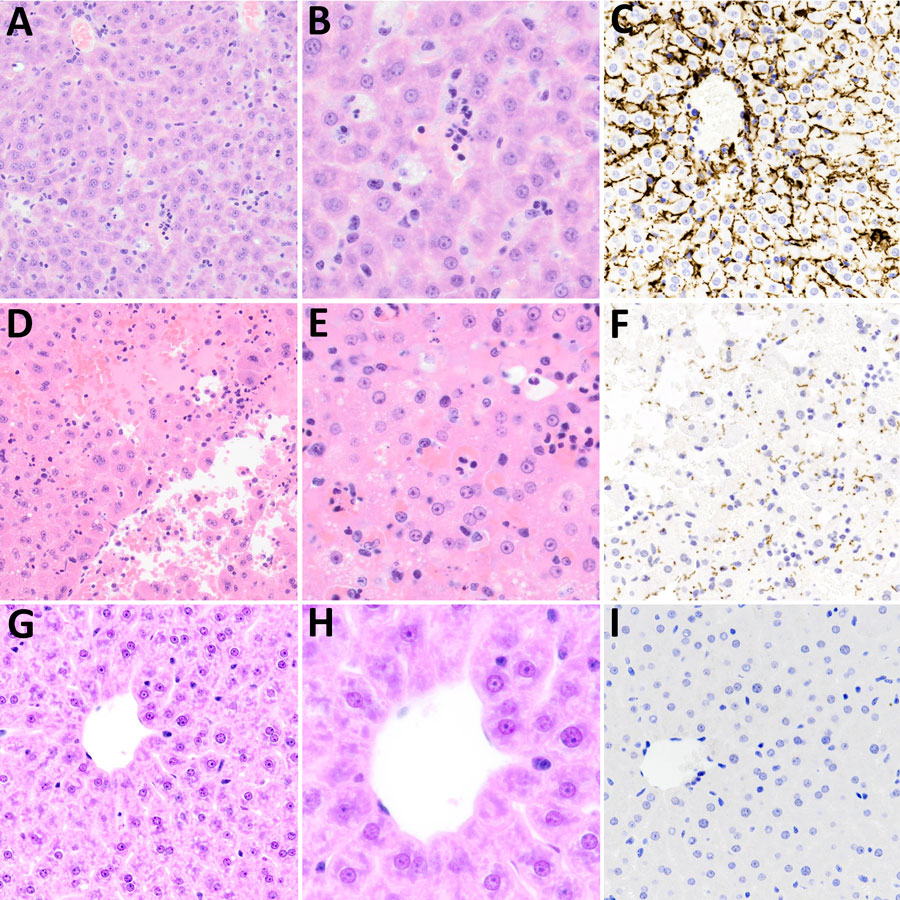Volume 31, Number 7—July 2025
Research
Peromyscus spp. Deer Mice as Rodent Model of Acute Leptospirosis
Figure 8

Figure 8. Microscopic and immunohistochemical examination of liver samples from challenged and control deer mice in study of Peromyscus species deer mice as rodent model of acute leptospirosis. A–C) Samples from LR131-challenged deer mice showing minimal change and intravascular neutrophils. The liver had intact architecture, minimal hepatocyte change, and some areas of vascular intrasinusoidal neutrophils. The presence of neutrophils may represent peripheral blood versus recruitment to the liver. A) Hematoxylin and eosin–stained tissue (A, original magnification ×20; B, original magnification ×40); C) LipL32 immunohistochemistry-labeled liver (original magnification ×20). D–F) Samples from LAD1-challenged deer mice showing acute diffuse purulent hepatitis and necrosis. There was marked disruption of hepatic architecture with hepatocyte dissociation, diffuse neutrophilic (purulent) inflammation, and hepatocyte necrosis. Necrosis of hepatocytes resulted in confluent midzonal and centrilobular necrosis, sometimes bridging, with hemorrhage. The necrosis resulted in tissue fragility. D) Hematoxylin and eosin–stained tissue (A, original magnification ×20; B, original magnification ×40); F) LipL32 immunohistochemistry-labeled liver (original magnification ×20). G–I) Sample of noninfected control animal liver. G) Hematoxylin and eosin–stained tissue (A, original magnification ×20; B, original magnification ×40); I) LipL32 immunohistochemistry negative (original magnification ×20).